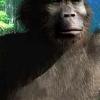7.62, you asked. This has been covered on this forum several times.
Google the below title to visit a journal citation. It is good reading despite the age since the cameras that were tested are no longer in production.
Camera Traps Can Be Heard and Seen by Animals
smell
color
noise
magnetic fields
camouflage
Smell. The plastic housings can absorb odors from storage / home. The mounting straps / security cables can have an odor. Python cables have a plastic covering. Plastics are made with flexibilizers or plasticizers. Plasticizers migrate out / off gas over time. Formic acid is a favorite of insects and bears.
Noryl plastic and polypropylene do not absorb odors or moisture.
Color of trail cameras is bad. We learned in WWII that color blind persons could detect enemy camouflage. Green is the worst because our man made green dyes can not match 'biological greens', especially near sunrise and sunset.
Noise. Ultrasonic, sonic and infrasonic. Humans make ultrasonic noise when we breath and move. Wool and cotton clothes are quieter than synthetics when we walk. Trail cameras are emit obnoxious amounts of ultrasonic noise. Charging up capacitors for flash is loud. Bear boxes / security enclosures are reflector-projectors of ultrasonic noise. Plotwatchers emit a repetitious sequence of ultrasonic noise. Ungulates look at Plotwatchers when their image is captured. Shielding for ultrasonics can have a cost higher than the camera. However, the first Reconyx series called the 'Silent Image' was mounted in a 'Sea Horse' brand polypropylene case. 120 size I believe. That PP, about 1/4" thick did an amazing job of attenuating the ultrasonic noise.
Sonic noise comes from the filter switching fixture when the camera shifts from daylight to infrared. As far as infrasonic noise is concerned, we are screwed. You can not attenuate infrasonics. ELF, X ELF is how Navy's communicate with their subs---- through the earth.
Magnetic fields. Trail cams have switching, regulated power supplies. They have fluctuating AC and DC magnetic fields. The area of the batteries is enjoyed by ants and spiders.
The color and texture of plastic housings can be dealt with. ASAT fabrics, Cambush and something we don't see much of in the US, Camohide from South Africa. The previously mentioned camo items do not reflect UV. ASAT 3D leafy fabric changes color and texture. Cambush does the same.
Camohide was not developed for 'wild' animals. It was developed to hide cameras from human animals, poachers. It is 3 dimensional, has good texture and color options. Worth a look just to see what is out there. Paint your own with the DIY option. I bought the 'pine' bark. It does have a 'synthetic' smell even after being outside for a month. Less than $30 and the shipping is high. DHL out of South Africa is the fastest.
The philosophy of the Camohide people is that bark pattern is second to color.
Cameras are not easy to deal with. I am reminded of a forum member who stays anonymous. He placed several trail cameras on trees. When he returned to the location, the trees had been pushed over to the ground, camera side to terrain.



